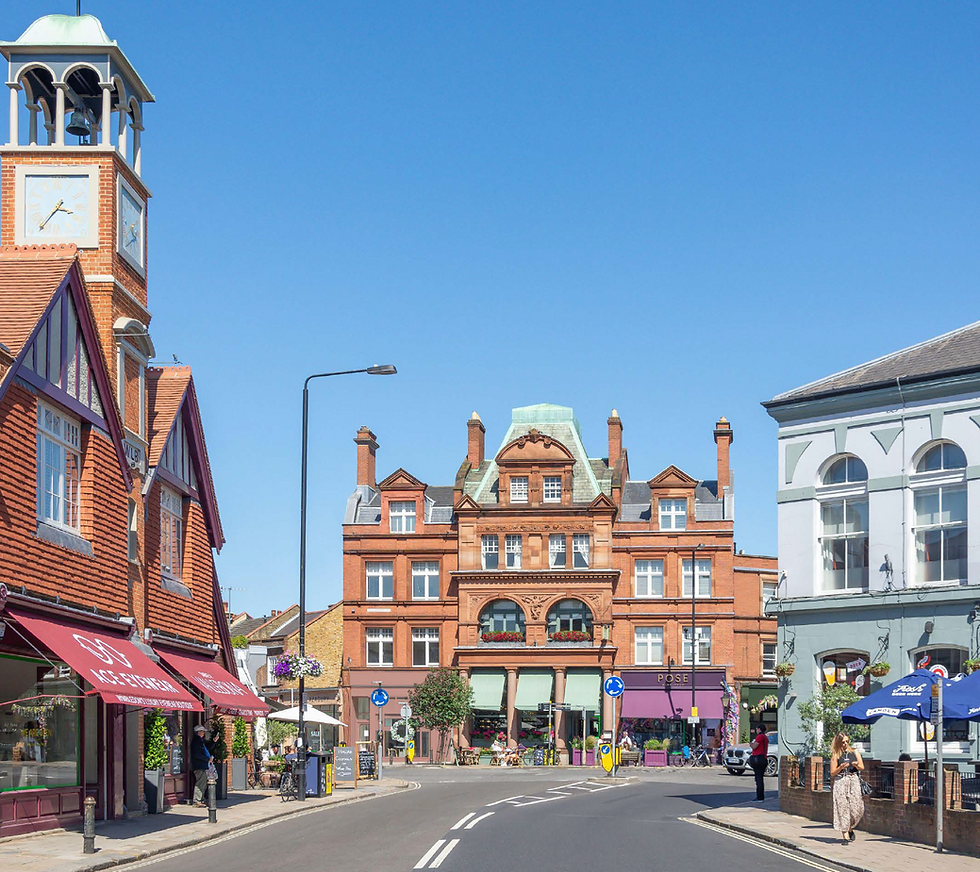UK Property Investment Market Update: September 2024
- tim57448
- Sep 4, 2024
- 3 min read
The UK residential property market is showing strong signs of growth and resilience, particularly in the buy-to-let investment sector. With a mix of economic stability, government support, and localized demand, key cities like London, Edinburgh, Manchester, and Birmingham are proving to be prime locations for property investors looking for stable returns and long-term growth.
1. A Bullish Outlook on Buy-to-Let Investments
Rising Rental Demand Across the UK: The demand for rental properties remains robust, driven by a combination of factors including high property prices, limited housing supply, and changing demographics. Young professionals, students, and families are increasingly renting due to affordability constraints in purchasing homes, particularly in urban centres like London, Manchester, and Birmingham. This trend is creating a buoyant market for buy-to-let investors who can achieve strong yields, particularly in regions with high demand and relatively lower property prices.
Attractive Rental Yields: Cities like Manchester and Birmingham continue to offer some of the highest rental yields in the UK. In Manchester, yields in areas like Ancoats and Salford Quays can reach 6-7%, while Birmingham’s Digbeth and Jewellery Quarter offer similar returns. With steady demand and ongoing urban regeneration projects, these cities provide lucrative opportunities for buy-to-let investors seeking long-term capital growth and stable rental income.
Interest Rate Cuts Provide a Boost: The recent reduction in the Bank of England base rate has revitalized the housing market by lowering borrowing costs. This is particularly advantageous for buy-to-let investors who rely on mortgage financing. As interest rates are expected to decrease further in 2025, investors can anticipate more favourable lending conditions, which could drive a new wave of investment in the residential property market.
2. Regional Market Highlights
London: A Renewed Focus on Outer Zones: While central London remains highly sought after, there is a growing trend of investors looking towards outer zones such as East London (Stratford, Barking, and Dagenham) and South London (Croydon, Sutton). These areas are benefiting from regeneration projects, new transport links, and a relatively affordable price point compared to central locations. With a strong demand for rental properties, especially from young professionals and students, buy-to-let investments in these areas are becoming increasingly attractive.
Edinburgh: High Rental Yields and Strong Tenant Demand: Edinburgh remains a top choice for buy-to-let investors due to its high rental yields and steady demand from students and professionals. Neighbourhoods like Leith and New Town are particularly popular, offering yields that can reach up to 8% in some cases. Edinburgh’s robust economic fundamentals and limited housing supply provide a stable environment for property investment, with prospects for capital appreciation.
Manchester: The Northern Powerhouse Continues to Shine: Manchester’s property market is booming, thanks to a combination of strong economic growth, large-scale infrastructure projects, and a thriving rental market. Areas such as Northern Quarter, Salford Quays, and MediaCityUK continue to attract investors, offering attractive rental yields and significant potential for capital growth. The city's young population and growing job market make it a hotspot for buy-to-let investments.
Birmingham: Rapid Growth and Regeneration Drive Demand: Birmingham is experiencing a surge in both residential and commercial property investments, driven by major infrastructure projects like HS2 and the revitalization of the city centre. Areas like Digbeth, Edgbaston, and the Jewellery Quarter are highly favoured by investors for their growth potential and high rental demand. The city’s strategic location and increasing student and professional population provide a solid foundation for sustained buy-to-let investment.
3. Government Policies and Support
Support for First-Time Buyers and Investors: The UK government’s extension of the Mortgage Guarantee Scheme until June 2025 is expected to support first-time buyers, which could indirectly benefit buy-to-let investors by increasing overall market activity. Additionally, reforms to planning laws and the push for new housing development aim to address the supply-demand imbalance, which can stabilize and potentially boost property values.
Focus on Sustainability and Green Building: Government incentives aimed at promoting sustainable housing are becoming increasingly important in the property market. This is especially relevant for buy-to-let investors who can capitalize on the demand for eco-friendly homes, which tend to attract higher rental premiums. The shift towards greener properties also aligns with broader market trends, making it a key consideration for future investments.
4. Conclusion
Overall, the UK property market, particularly in the buy-to-let sector, remains bullish in September 2024. Major cities such as London, Edinburgh, Manchester, and Birmingham offer diverse opportunities for investors, driven by strong rental demand, attractive yields, and supportive economic conditions. With the right strategy and focus on growth areas, buy-to-let investments can deliver strong returns in the current market climate.







Comments